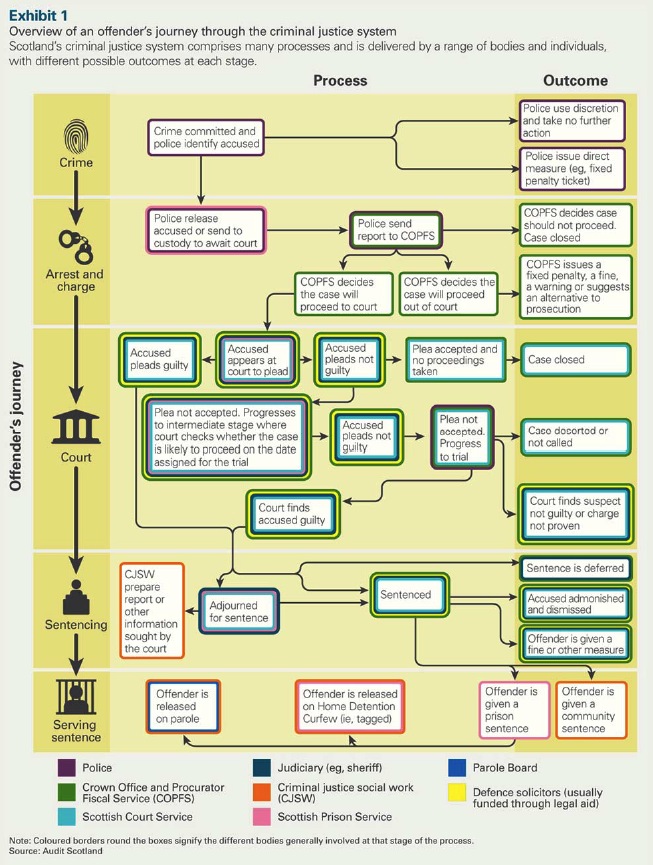Reconviction Rates in Scotland: 2009-10 Offender Cohort
Analysis of one year reconviction rates for the cohort of offenders released from a custodial sentence or receiving a non-custodial disposal in 2009-10
This document is part of a collection
3 Background
3.1 The underlying principle of measuring recidivism is that someone who has received some form of criminal justice sanction (such as a community sentence or a fine) goes on to commit another offence within a set time period. In this case, the cohort of interest consists of offenders who have been released from a custodial sentence or received a non-custodial sentence during the period (see Section 12.2 for more details).
3.2 Scotland’s criminal justice system is complex and many different outcomes and interventions are possible at each stage of the offenders journey. The complexity of this system is summarised in the Audit Scotland report (An Overview of Scotland’s criminal justice system) and is shown in Chart 2. It points out that not all offences reported to the police result in a conviction, and reoffending (measured at the start of the process) is not the same thing as reconviction (produced right at the end of the criminal justice process). The latter can be affected by many different variables that are not necessarily related to the incidence of crime (National Audit Office 2012 Comparing International Criminal Justice Systems, Briefing for the House of Commons Justice Committee).
3.3 This bulletin provides more detailed analysis of reconvictions by focussing on the complementary measure of frequency of reconviction, in addition to the reconviction rate. While the reconviction rate provides an indication of progress in tackling offender recidivism at a global level, it may not be sensitive enough to detect individual-level progress as a result of interventions and programmes in the criminal justice system; such programmes may have been successful in reducing the frequency of reconviction, but not in complete desistance from crime.
3.4 The reconviction frequency rate is presented here as the average number of reconvictions within a specified follow up period from the date of the index conviction per 100 offenders. For example, the 2009-10 one year reconviction frequency rate is 54.0 (Table 1) and this means that there were 54 reconvictions for every 100 offenders in the year following their index conviction in 2009-10.
Chart 2 Offenders journey through the criminal justice system.
(Source: Audit Scotland 2012 An overview of Scotland’s criminal justice system)

Contact
Email: Howard Hooper
There is a problem
Thanks for your feedback